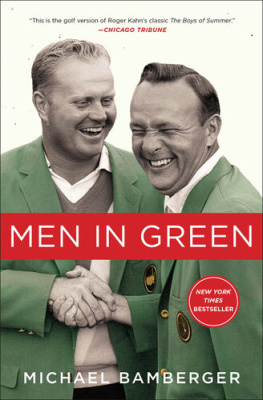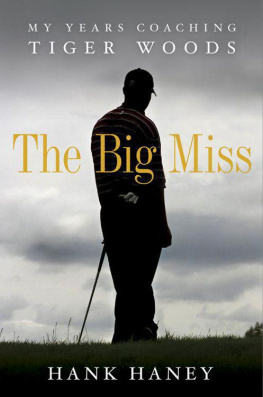Unplayable
Unplayable
An Inside Account of Tigers Most Tumultuous Season
ROBERT LUSETICH


A Division of Simon & Schuster, Inc.
1230 Avenue of the Americas
New York, NY 10020
www.SimonandSchuster.com
Copyright 2010 by Robert Lusetich
All rights reserved, including the right to reproduce this book or portions thereof in any form whatsoever. For information, address Atria Books Subsidiary Rights Department, 1230 Avenue of the Americas, New York, NY 10020.
First Atria Books hardcover edition May 2010
ATRIA BOOKS and colophon are trademarks of Simon & Schuster, Inc.
For information about special discounts for bulk purchases, please contact Simon & Schuster Special Sales at 1-866-506-1949 or business@simonandschuster.com.
The Simon & Schuster Speakers Bureau can bring authors to your live event. For more information or to book an event, contact the Simon & Schuster Speakers Bureau at 1-866-248-3049 or visit our website at www.simonspeakers.com.
Designed by Dana Sloan
Manufactured in the United States of America
10 9 8 7 6 5 4 3 2 1
Library of Congress Cataloging-in-Publication Data
Lusetich, Robert.
Unplayable : an inside account of Tigers most tumultuous season / Robert Lusetich.
p. cm.
1. Woods, Tiger. 2. PGA Tour (Association) 3. GolfTournamentsUnited States. 4. GolfersUnited States. I. Title.
GV964.W66L87 2010
796.352092dc22
[B]
2010014959
ISBN 978-1-4391-6095-4
ISBN 978-1-4391-6414-3 (ebook)
For Colleen, Riley, and Dylan
CONTENTS
INTRODUCTION
The call came on a balmy September evening in 2008 as my wife and I were about to take our sons to a birthday dinner for the older one, who had turned twelve. My editor at The Australian, on whose dime Id traveled the world as a foreign correspondent since the mid-1990s, informed me that a Los Angeles bureau was a luxury the newspaper can no longer afford. The economy was falling apart, advertisers were deserting, and News Corporation had ordered immediate and penetrating cuts to newspaper budgets. Foreign bureaus were suddenly indulgences; where there were almost twenty Australian newspaper correspondents in the United States in the halcyon days of the early 1990s, only three were left by 2010. And just like that, I was unemployed. A hefty buyout helped soften the blow, but I was on the wrong side of forty and had spent virtually my entire working life as an ink-stained newspaper reporter.
What was I going to do with my life? Newspapers were busily sacking, not hiring, as the insanity of giving away their product online for free took its inevitable toll. Readers were canceling subscriptions and advertisers were looking elsewhere as long-standing media models were no longer relevant. I felt like a blacksmith as the first mass-produced Oldsmobile came chugging down the road; the market for newspaper journalism, just like horseshoes a century before, wouldnt be bouncing back.
Of the many assignments Id carried out for The Australianspanning every continent except Africa and Antartica and ranging from World Cup soccer finals to civil unrest in Argentinathose Id grown to most enjoy involved golf, a maddening pursuit to which I myself had become addicted. Specifically, I looked forward to tournaments that featured Tiger Woods. Woods is one of those sporting supernovas who come along once in a generation, if were lucky. He transcends his sport, which others had before, but none in quite the same way. Roger Federer, whom Id watched win Wimbledon from a courtside seat, is just as celestial and more graceful, but he had to grow into the champion hed become; Woods was twenty years ahead of him in evolution and, by the nature of his sport, could remain relevant for twenty years after Federer had retired. It took a perfect stormparents, upbringing, the sport he chose, the strength of his mind and determination and, of course, a stratospheric talentto produce Woods. And what is remarkable about him is that he has generated such widespread global appeal in a sport much of the worlds population can never hope to play. Golf isnt like soccer or basketball or even tennis, games that require relatively few props or, more to the point, money. Woodss branding has been a tribute to his excellence and, it has to be said, the omnipotence of the Nike Swoosh. Many of my colleagues were cynical about the way Woodss handlers had manipulated his image, but for whatever reasonsand I hope navet wasnt one of themI found it hard to be cynical when it came to Tiger Woods.
Not that I couldnt see the flaws. The stubborn refusal to give up any control, the temper, the cold way he could have with people, the selfishness, the way he was pampered and indulged by those around him, how he was unable to accept any criticism no matter how well-intentioned, and how his true opinionsexpressed only to those he could trustwere constantly being suppressed in favor of carefully inoffensive public views. I knew, for instance, that he feels more Asian than black, despite his skin tone, but he would only hint at it, saying things like itd be insulting to his mother to be called African American. But, really, he doesnt want to open that can of worms. Most remarkably, Woods really did believe he could arrive at a tournament, bask in the glory of sinking the winning putt, then disappear to live a private life, interrupted only by filming the advertising campaigns that put perhaps $100 million a year in his pocket.
But Ive been around many prominent athletes, and their flaws are, by and large, worse. There are a few exceptions, like U.S. Open tennis champion Patrick Rafter, who is a sainthe once told me that hed tried to be an arsehole but I just couldnt do itbut most are more like Pete Sampras and Barry Bonds in that they didnt have to try very hard; it came naturally. And in golf, with its tradition of gentlemanliness, the realities of private lives hardly gell with the cultivated public personae. I ran into a well-known player at an airport once, who told me hed flown in to work with an instructor on his short game, which I had no reason to disbelieve until an attractive young woman who wasnt his wife embraced him intimately as hed barely finished saying the words. Greg Norman and Arnold Palmer both had a great appreciation for the beauty of the female form, but they reigned in different times. The times have changed, even Woods acknowledged in 2010. With twenty-four-hour news, youre looking for any kind of news to get out there. But it was also true that the media looked the other way in years past. Golf writers back then were friendly with the players they covered, and some of them were even chasing the same women. But Woods, with very few exceptions, was estranged from the media that covers him, and when he needed their restraint at the end of 2009, he instead got their revenge.
My view of Woodsadmittedly from observations made at the distance of press conferences or media scrums after rounds but also interspersed with the occasional brief off-the-record conversationwas that even though he is flawed, he is essentially a good guy. And, beyond that, it is the beauty of his playing that always won the day with me. In 2000 I asked him, not for the first time, how much better he thought he could get. Why do you always ask me that? he said. I asked because in him I saw something different. I was fascinated by the way he could make life conform to his wishes, as if the universes many powerful and complex forces could be made to obey him the way a golf ball obeyed him.
Next page






